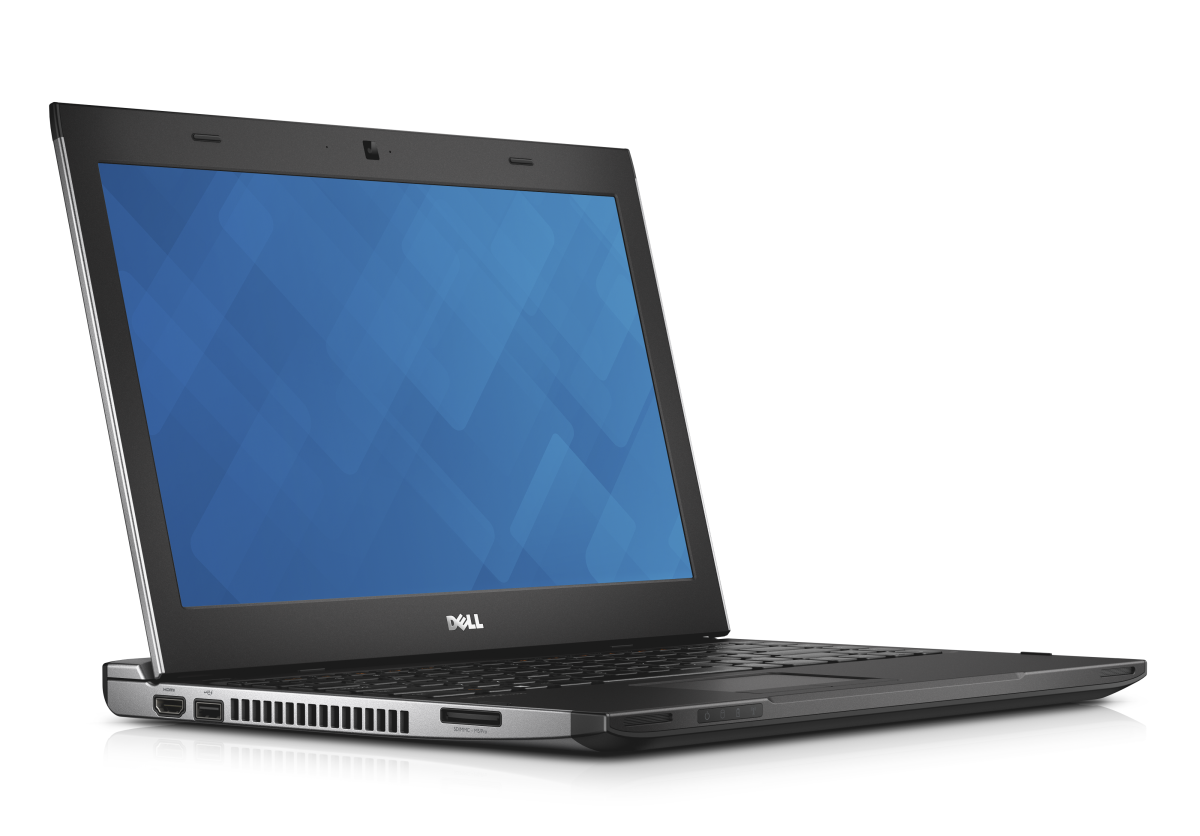Dell Latitude 3330 review
The Latitude 3330 is aimed at small businesses and schools. Is the Windows 7 machine a perfect classroom companion or obsolete?

Dell intends its Latitude 3330 for small business and education, and its reasonable performance and battery life are good enough for these markets. The screen, build quality and design are all average, though, and the Latitude isn’t any cheaper than rivals.
-
+
Decent performance; Good battery life; Reasonable price
-
-
Dull design; Average screen; Middling build quality; Plenty of competition

Specification & benchmarks
Dell hasn't deployed one of Intel's new Haswell processors for this machine instead, it's used the Ivy Bridge-based Core i5-3337U. It's a mid-range low-power part with two cores, and Hyper-Threading and Turbo Boost are both included so the two cores address four concurrent tasks, and the 1.8GHz stock speed can hit a maximum of 2.7GHz.
Four gigabytes of RAM is at the low end of what we're seeing in laptops now, and the two parts combined for an overall application benchmark score of 0.66. The Dell is better when navigating Windows and applications, as its responsiveness score of 0.8 demonstrates, but its weaknesses are highlighted by a poorer multitasking result of 0.5. It's the sort of pace we've seen in other laptops at this price, and it's enough to handle basic work applications but not much more.
The lack of pure power does mean battery life is reasonable, but connectivity is poor.
Graphical capabilities minimal too: the Latitude ran through our 1,366 x 768 Low-quality Crysis test at 35fps.
The 500GB hard disk is described by Dell as "hybrid" drive that boosts speeds with flash memory, but we didn't see much evidence of this in the AS SSD benchmark. The drive's sequential read and write speeds of 79MB/sec and 109MB/sec are the results we'd expect from standard platter-based storage.
The lack of pure power does mean battery life is reasonable. An eight-hour light use benchmark result is a couple of hours behind most Ultrabooks, and it means that the Latitude should make it through a day away from the mains.
Connectivity is poor. There's Gigabit Ethernet, but the 802.11n Wi-Fi is single-band, and there's no sign of Bluetooth, TPM or NFC components that we're used to seeing in most laptops these days. Dell does promise mobile broadband, but it hasn't released details about these options.
Sign up today and you will receive a free copy of our Future Focus 2025 report - the leading guidance on AI, cybersecurity and other IT challenges as per 700+ senior executives
Options and Upgrades
Dell usually lists its laptops with a huge range of configuration options, but that's not the case with the Latitude 3330 it comes in just two models with specifications that can't be changed.
The model we've reviewed here costs 573 ex VAT, and it's the pricier of the two machines. The cheaper Latitude costs 434 ex VAT and its specification is reduced in several departments. The Core i3-2375M processor is based on the older Sandy Bridge architecture rather than the Ivy Bridge underpinnings of the Core i5 used in our review sample, and its speed of 1.5GHz isn't anything to boast about especially without Turbo Boost. The cheaper model's graphics capabilities won't be as good, either while the more expensive machine has HD Graphics 4000, the cheaper laptop has HD Graphics 3000.
Storage takes a hit, too, with the 500GB hybrid drive replaced by a standard 320GB hard disk. Warranty options are the same across both models: upgrading the standard one-year next-business-day deal to a three-year package costs an extra 25, and adding ProSupport to the one- and three-year deals respectively will put 24 and 95 onto the price.
Dell intends the Latitude 3330 to be used in education as well as small business, and it's got one accessory that's pertinent to the classroom. Its Mobile Computing Cart can be used to store and charge up to 30 laptops or tablets at once, it's got wheels, and it's got a lock, on-board Ethernet and a heat management system. It's not cheap: an unmanaged version costs 1,643, and a managed Cart will set you back 3,000.
Overall
The Latitude 3330 is decent in most departments: it's light, battery life is good, and it's got enough power to handle the applications that small businesses and schools use. Build quality and looks are both only average, though, and the screen won't win any quality awards either. There's plenty of competition in this mid-range market, and the Dell isn't good enough to lift itself above rivals.
Verdict
Dell intends its Latitude 3330 for small business and education, and its reasonable performance and battery life are good enough for these markets. The screen, build quality and design are all average, though, and the Latitude isn’t any cheaper than rivals.
OS: Windows 7 Professional 64-bit Processor: 1.8GHz Intel Core i5-3337U RAM: 4GB DDR3 Storage: 500GB Hybrid hard disk, 8GB flash Screen: 13.3in 1,366 x 768 LCD Connectivity: Single-band 802.11n Wi-Fi, Gigabit Ethernet Ports: 2 x USB 3, 1 x USB 2, D-SUB, HDMI, SD card slot Dimensions: 329 x 238 x 32mm (WxDxH) Weight: 1.8kg Warranty: 1yr RTB
Mike Jennings has worked as a technology journalist for more than a decade and has been fascinated by computers since childhood, when he spent far too long building terrible websites. He loves desktop PCs, components, laptops and anything to do with the latest hardware.
Mike worked as a staff writer at PC Pro magazine in London for seven years, and during that time wrote for a variety of other tech titles, including Custom PC, Micro Mart and Computer Shopper. Since 2013, he’s been a freelance tech writer, and writes regularly for titles like Wired, TechRadar, Stuff, TechSpot, IT Pro, TrustedReviews and TechAdvisor. He still loves tech and covers everything from the latest business hardware and software to high-end gaming gear, and you’ll find him on plenty of sites writing reviews, features and guides on a vast range of topics.
You can email Mike at mike@mike-jennings.net, or find him on Twitter at @mikejjennings
-
 Trump's AI executive order could leave US in a 'regulatory vacuum'
Trump's AI executive order could leave US in a 'regulatory vacuum'News Citing a "patchwork of 50 different regulatory regimes" and "ideological bias", President Trump wants rules to be set at a federal level
By Emma Woollacott Published
-
 Microsoft Excel is still alive and kicking at 40 – and it's surging in popularity as 82% of finance professionals report ‘emotional attachment’ to the spreadsheet software
Microsoft Excel is still alive and kicking at 40 – and it's surging in popularity as 82% of finance professionals report ‘emotional attachment’ to the spreadsheet softwareNews A recent survey found Gen Z and Millennial finance professionals have a strong “emotional attachment” to Microsoft Excel
By Emma Woollacott Published
-
 LastPass hit with ICO fine after 2022 data breach exposed 1.6 million users – here’s how the incident unfolded
LastPass hit with ICO fine after 2022 data breach exposed 1.6 million users – here’s how the incident unfoldedNews The impact of the LastPass breach was felt by customers as late as December 2024
By Emma Woollacott Published
